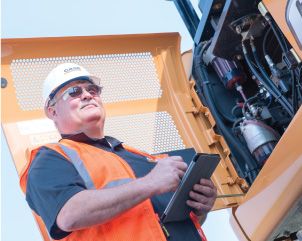Best Practices
Checklist for cold weather operation
Use the best fuel
Make sure you are using high quality winter diesel fuel. The fuel conditioner should match the type of fuel you are using (e.g., low sulfur) and should be approved by manufacturer.
Check starting devices
Check to make sure block heaters and cold weather starting devices are working properly.
Warm up the machine
Let machines come up to operating temperature before working.
Keep a spare fuel filter
Keep an extra fuel filter in the cab, but follow installation instructions in your operator's manual.
Check ice build up
Check for Ice or snow build up in exhaust or intake if applicable. Inspect and clear Ice or snow build up from throttle, and brake area.
Warm up to improve steering response
Steering response on equipment with hydraulic steering may become very slow at low temperatures, even when the correct oils are used. Once the engine is started, let the machine idle until the engine reaches operating temperature.
Safety first
Mount and dismount your machine using three points of contact. Remember that you are working with snow and ice; slips and falls are a common cause of injuries. Wear your seatbelt when operating equipment and stay alert.
For Idle Machines
- Start once a month, when temperature is above freezing.
- Avoid starting a machine in extreme cold weather.
- Operate hydraulics for a brief time.
- Do not try to break crawler type machines from a badly frozen situation. It can result in power train damage.
- Test batteries, and use proper procedures if a unit needs to be started with an assist devise or jumper cables.
Need a specialized machine for winter work? Call our rental team today!

